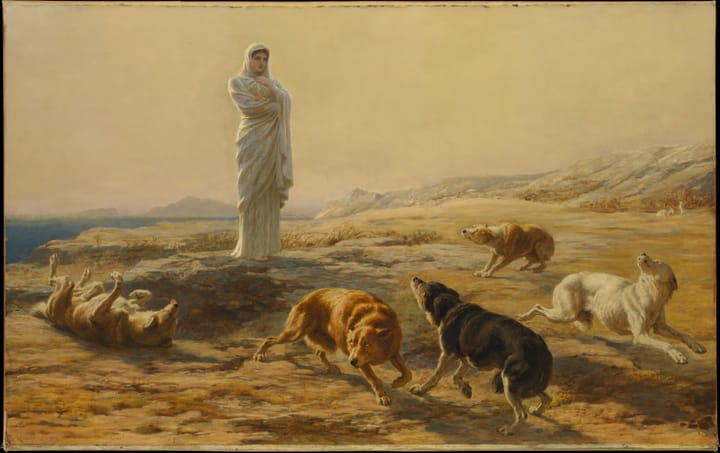week 06 / 2025
In February the sun returns slowly, like a scorned but needy god, and we prostrate ourselves before it with offerings of incense, firstborn lambs and WEEKNOTES. This week, finish lines are approached asymptotically, and the eschaton is retrospectively re-immanentised.

To all youth an’ youth; ‘member, we don’t talk foolishness, we talk truth*—it’s WEEKNOTES at Worldbuilding Agency.
Every year, it sneaks up on me, despite the degree to which I’m waiting for it: the first evening when there’s still some light in the sky at 5pm, the first morning when the dawn gets going properly before 8am. We’re still a way out from the equinox, of course, but we’re into the stage when the rate of change starts to accelerate… and my whole being can feel it. I’ve made it through another winter, and spring is on its way.
(Granted, this has not been a very winter-y winter, whether here or elsewhere… but it’s less about weather, for me, and more about the shortness of the days.)
ticked off
- Nine hours on PROJECT TEMPORAL. (Pushing this thing toward the finish line; pretty much the only thing remaining is the pilot workshop based around the thing we’ve been making for seven months or so, which will also be its public debut—so I’ll be able to talk about it in more detail then. Workshop is happening in London, first full week of March.)
- Seven and a half hours of admyn, a good third of which was meetings not related to any project specifically named in this run-down. (Another good reason to do this sort of by-the-hours breakdown is that you get to actually quantify the vague awareness that a lot of your time gets taken up by meetings, which is a reminder of why your rates should be higher. But we have meetings in order to secure more work… and that has paid off this week, with a short new project to add to the slate for the next couple of weeks. w00t!)
- Six hours on PROJECT PORTON. (Again, mostly meetings—but this is a big project with a lot of moving parts, and keeping everyone on the train is important. Looks like I’ll be getting my hands dirty earlier than expected, however, which is good news for everyone apart from the person who looks after my calendar.)
- Three hours of STPLN activities: a lesson/lecture and Q&A about project budgeting. (Aimed primarily at people developing budgets for projects under the Swedish arts grant regime—which appears to have some *very* challenging idiosyncrasies, when compared to funding systems with which I am more familiar—this was actually a very enlightening three hours, and of much greater use to me than I had expected. Pro tip: when you’re hiring someone to teach something, try to pick someone who genuinely loves the topic! It really does make a huge difference.)
- Two hours of directed research reading. (Breaking this out separately from the following, because, well: it’s directed rather than not. Had a batch of interrelated stuff to read, and figured I might as well make the time to get it all down in one go. Glad I did, too.)
- Ten hours of undirected writing and reading, because that’s how we do.
Busy week! And that’s before we even start counting…
kinmaking
A couple of hours on Monday with Andreas Mattsson, journalist-ethnographer and director of studies for Lund University’s journalism school.
The first Malmö futures meet-up of the year took place on Tuesday morning, loosely and productively themed around the idea of “hope”—which, perhaps unsurprisingly, turns out to be a fairly contested idea. A very pleasant discussion, though, as always.
Later on Tuesday I spent a couple of hours (and a couple of Czech lagers) talking all around the houses with Bella Salomonsson of BLoW.
On Thursday morning I spent an hour and a half sitting in on a virtual meeting aimed at putting together a pan-Scandi network of foresight professionals. I’m going to keep an eye on it, but I’m not sure this is the sort of organisation I’m well suited to, for reasons explored in more detail at my personal blog. (The short version is that it seems much more oriented toward “trad” futures work, not just practically but philosophically, and there’s only so many of the dwindling hours allotted to my time on earth that I’m willing to waste listening to people a few yards from the retirement line explain how excited we should all be about “AI”.)
reading
More Helliconia at the start of the week (see the last batch of weeknotes for details); one book of the trilogy to go.
Also rattled through Elif Shafak’s The Architect’s Apprentice, which was picked for the most recent round of a local bookgroup of which I’m a participant. It’s OK? I mean, I read it pretty fast, and it’s not a skinny book, so I clearly didn’t dislike it… but the tonality felt a bit strange, as if it couldn’t quite decide whether it was being a fable of very-early-modern Istanbul under the Ottoman empire, or a serious historical novel of the same.
To be clear, I would have no problem with a book that sat anywhere along the line between those two possibilities! But there’s a kind of flip-flopping between these two very different narrative tones which I found a little frustrating, and which made the final section of the book (in which the titular apprentice finds destiny and contentment alike in an entirely different place) feel not exactly unearned, but discontinuous, as if it happened in not just a different country, but a different universe.
(Don’t let that put you off, though; having technique-based beefs with stories is, I suspect, mostly a thing for those of us who write them. Furthermore, Shafak’s sales figures suggest that a significant tranche of the reading public does not at all care about tone in the way I am caring about it here!)
a clipping
This week’s clipping comes from Erik Davis, whose early book Techgnosis—which I stumbled upon among the stacks while working in the public libraries of Portsmouth during the mid-Noughties—provided me with a much-needed clarifying lens with which to understand the historical-psychosocial context of the adolescence I was finally leaving behind.
Here, Davis looks back at one of the canonical texts of that era, Grant Morrison’s The Invisibles—which, like many such canonical texts, I actually came to quite late (having, in this case, never really been much of a comics reader). But if I was late to Morrison’s mad party, then Davis is later still, having only just had his first encounter with the full run—which means I get to (re)see it through the eyes of someone whose immediate experience of the Nineties was much more intellectually informed and mature than my own.
The Invisibles is one of the great representative works of the 90s, like Infinite Jest or Twin Peaks or Selected Ambient Works Volume II. It’s also the last gasp of high and mutant psychedelic subculture that stretches back through Hakim Bey, the Church of the Subgenius, Illuminatus!, the Merry Pranksters,and the Discordian Society. (I have a long argument about why “subculture” in the classic sense becomes impossible in subsequent decades, but that belongs elsewhere.) Morrison’s work also captures the buzzing apocalyptic tenor of the decade, which is as hard to communicate to younger generations as the hippie faith in the Revolution was to mine. Reflecting on the 1990s later, Morrison wrote, “The alien icon started to appear everywhere. Something was going on. I don’t think it was just me. I think it’s why the culture started producing more psychedelic energy. Films like The Matrix and ads that looked like surrealist films. Something got in. I’m utterly sure something got in.” It got into me, too, and Techgnosis was one of the results, a text marked by a similar frisson of ominous technocultural becoming, singed with the flickering foreshadow of some oncoming Event.
I really must add Davis's High Weirdness to my TBR list...
OK, that’s all for this week. Cheerio!
This has been the Worldbuilding Agency weeknotes for Week 06 of 2025. Thanks for reading! If you've enjoyed them, it's free to subscribe. If you are already subscribed, please send to a friend who you think might also like it!
* Leftism by Leftfield was released thirty years back and holy crap, that feels like a loooong time ago, but also like just yesterday?





Comments ()